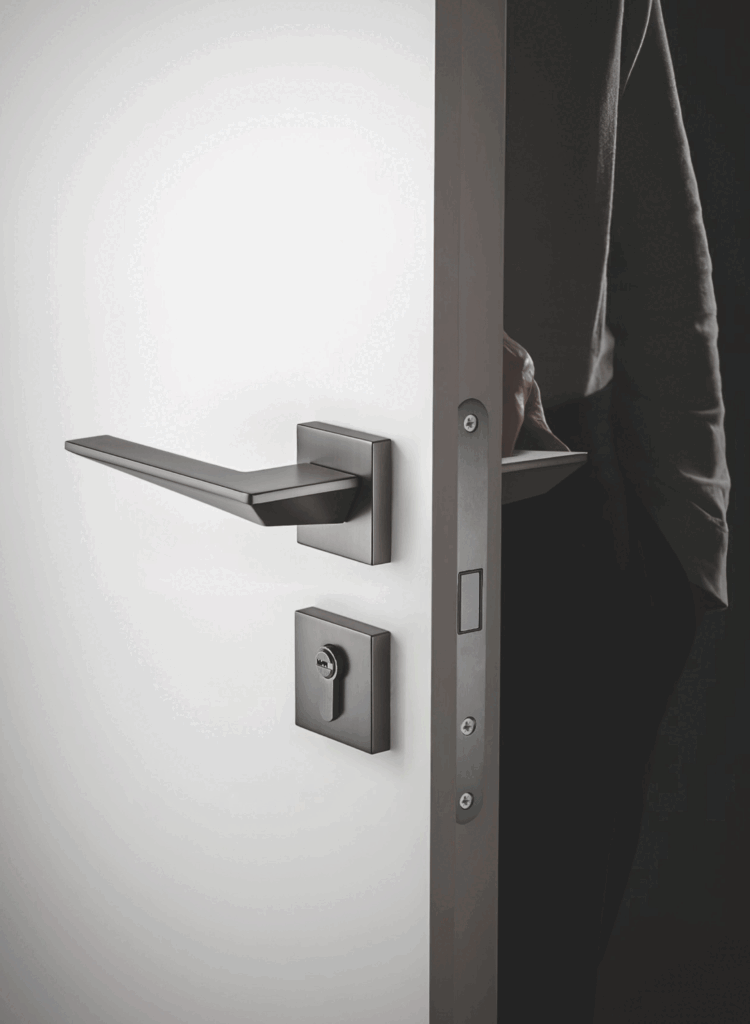In the door hardware industry, standards ensure quality, safety, and durability. DIN EN 1935 is a pivotal European standard specifically tailored for single-axis hinges used in doors and windows. This article delves into the essence of DIN EN 1935, explaining its significance, scope, and how it shapes hinge performance grades, offering a clearer understanding for end users.
What is DIN EN 1935?
DIN EN 1935 is a harmonized European standard applicable to mechanically operated single-axis hinges. It establishes the criteria for testing and classifying hinges based on multiple parameters, such as durability, strength, and corrosion resistance. Designed to ensure consistency in product quality throughout the European Union and other markets that adopt it, the standard applies to various hinge types.
Key Parameters of DIN EN 1935
DIN EN 1935 adopts an 8-digit numerical coding system to standardize the classification of door and window hardware. This system also applies to other architectural hardware products, ensuring performance consistency across different components. For instance, the system allows for selecting matching products with the same corrosion resistance level or usage category. Each digit represents a specific characteristic. Below is a simple breakdown of what each digit means:
Responsibility Classification (first digit)
Annex A of DIN EN 1935 categorizes hinges into four principal duty classifications, indicated by the initial digit:
Grade 1: Light use
Grade 2: Moderate capacity
Grade 3: Industrial strength
Grade 4: Critical obligation
These grades pertain to doors, but only Grade 1 is appropriate for windows. Each grade evaluates the intended usage of the door or window, considering the likelihood of hard handling. “Severe duty” denotes circumstances in which doors undergo frequent hits.
Durability (Second Digit)
The EN 1935 standard groups hinge into three levels based on how often they’ll be used and how much weight they can handle. Here’s a simple breakdown from Table 1:
Grade 3: For light use, tested to last 10,000 cycles (e.g., low-traffic doors).
Grade 4: For medium use, tested for 25,000 cycles (e.g., office doors).
Grade 7: For heavy use, tested to withstand 200,000 cycles (e.g., doors in busy public spaces).
This system ensures the right hinge is chosen for the job, whether it’s for a quiet home or a bustling building.
Test door mass (third digit)
Hinges are categorized based on their weight-bearing capacity. This grading system assists in the selection of hinges according to the weight specifications of the door.
Suitability for Fire/Smoke Doors (Fourth Digit)
The fourth digit in the EN 1935 standard indicates if a hinge can be used on fire- and smoke-rated doors. There are two levels:
Grade 0: Not suitable for fire or smoke doors.
Grade 1: Suitable for fire and smoke doors, but only if tested and approved under EN 1634-1 (not EN 1935).
This ensures that the hinges meet the necessary safety requirements for fire and smoke protection.
Adherence to Safety Regulations (fifth digit)
The fifth digit indicates Indicates user safety level. Hinges must attain a minimum of Grade 1 to guarantee secure functionality under standard operating conditions.
Corrosion Resistance (Sixth Digit)
The sixth digit in the EN 1935 standard shows how well a hinge can handle rust and corrosion, based on five levels from EN 1670:
Grade 0: No protection (not for damp areas).
Grade 1: Basic protection (works in dry indoor spaces).
Grade 2: Moderate protection (okay with some moisture).
Grade 3: Good protection (suitable for humid or outdoor use).
Grade 4: Excellent protection (ideal for harsh environments like coastal or industrial areas).
This rating system helps you pick the right hinge for different conditions, ensuring long-lasting performance.
Security(seventh digit)
The seventh digit evaluates a hinge’s resistance to unauthorized access. Two security classifications are available:
Grade 0: Inappropriate for burglar-resistant doors
Grade 1: Appropriate for burglar-resistant doors, contingent upon a comprehensive security assessment.
Hinge grade (eighth digit)
The concluding digit denotes the comprehensive performance rating of the hinge by DIN EN 1935. This digit may occasionally represent a double-digit amount. The standard delineates a total of 14 classes, offering assistance for the selection of appropriate hinges based on strength, durability, and application requirements.

In situations with increased security risks or where hinges endure significant stress, Grades 12 and 14 are advisable. These grades have enhanced load-bearing capacity, with thicker flaps and pins engineered to withstand rigorous use.
Example of classification

This denotes a hinge for use in medium-duty situations tested to 200 000 cycles, for use on doors with a mass up to 60 kg, with no stated fire resistance, mild corrosion resistance, suitable for use on burglar-resistant doors, and with a hinge grading of 10.
Why BS EN 1935 Matters for Hinges
Adhering to BS EN 1935 standards offers numerous benefits for manufacturers, specifiers, and end-users:
Assured Quality: Complying hinges meet industry benchmarks for safety, functionality, and endurance.
Improved Performance: Euro butt hinges tested to these standards deliver long-term reliability even under demanding conditions.
Enhanced Safety: Fire resistance and security criteria guarantee enhanced safety for critical applications.
How to Ensure Compliance
Compliance with DIN EN 1935 involves rigorous testing by certified laboratories. Manufacturers often seek third-party certification to validate the performance claims of their products. For businesses and specifiers, partnering with reputable manufacturers and suppliers ensures that products meet all necessary safety and performance criteria.
Conclusion
In conclusion, DIN EN 1935 provides a robust framework for the testing and classification of single-axis hinges, ensuring they meet high standards for durability, safety, and performance. It is a critical benchmark for manufacturers and helps end-users make informed decisions. As a trusted supplier in the door hardware industry, UMAY adheres to such standards to provide high-quality, reliable solutions tailored to our client’s specific needs, ensuring top performance and safety for every application.
Share This Story, Choose Your Platform!

